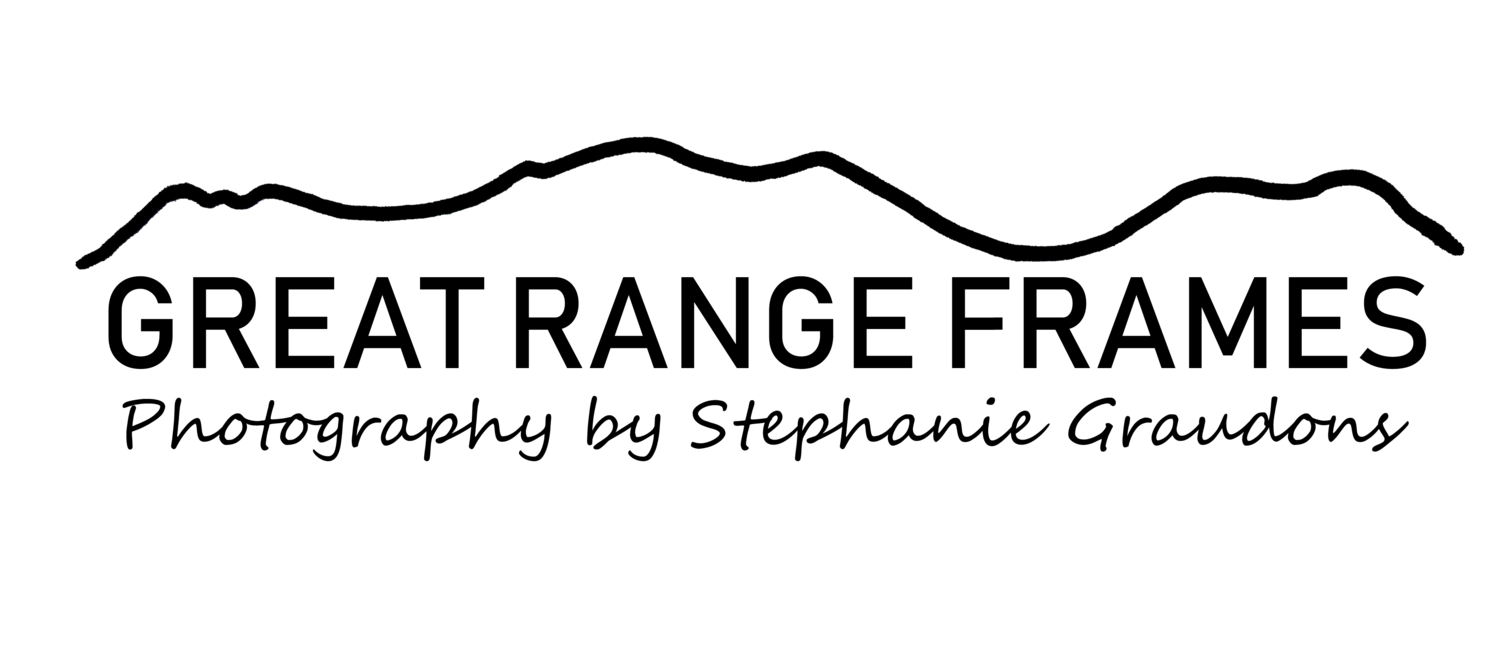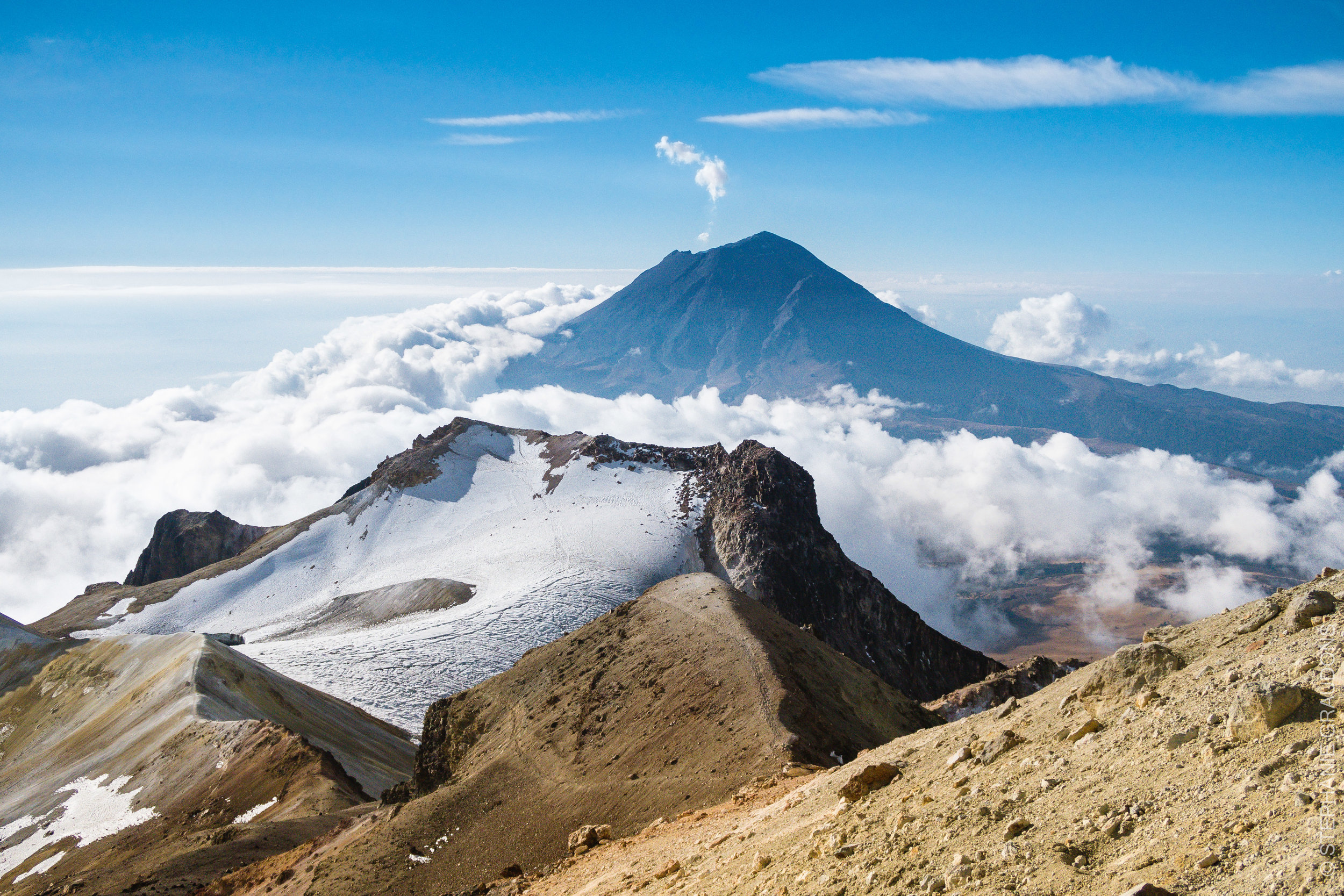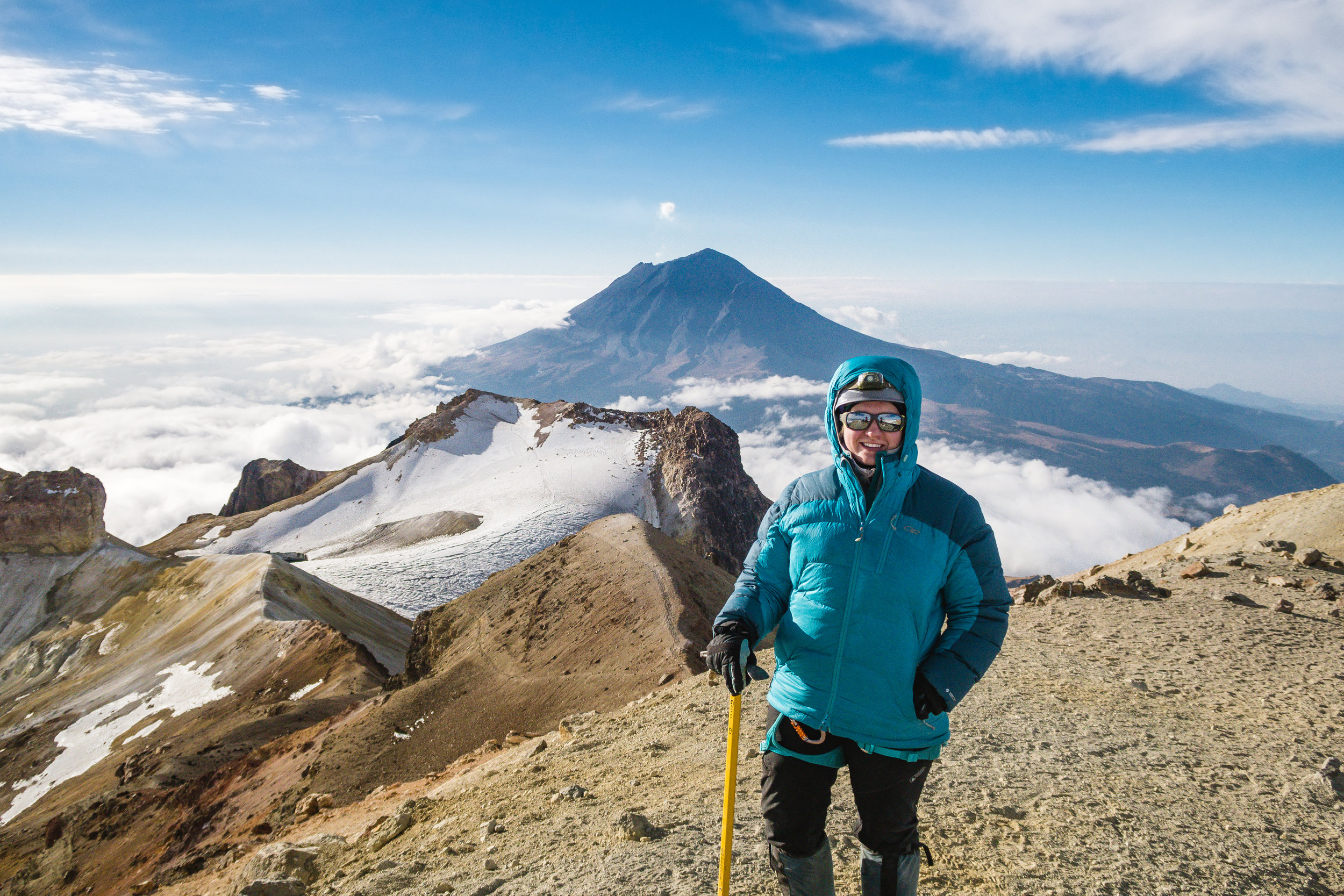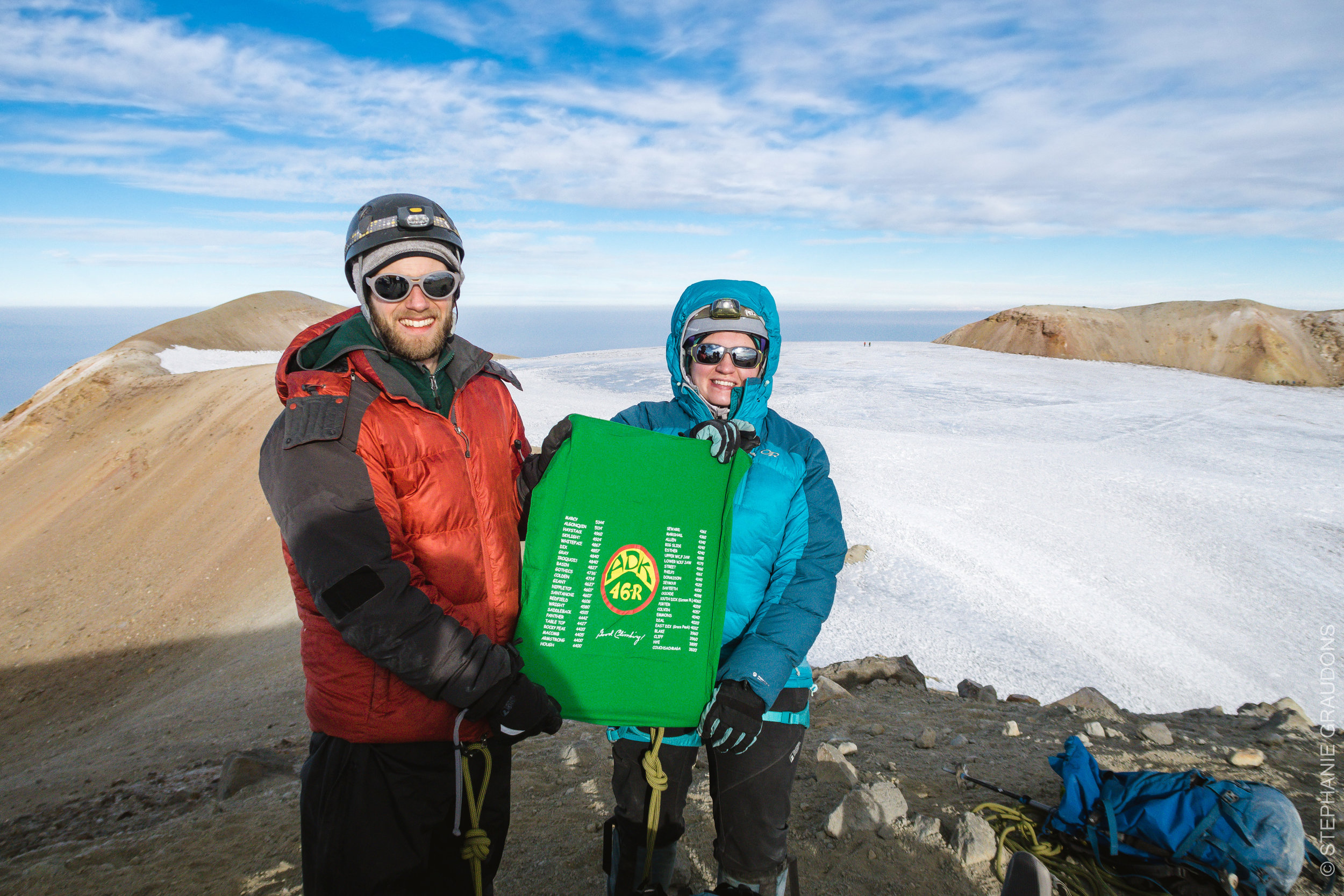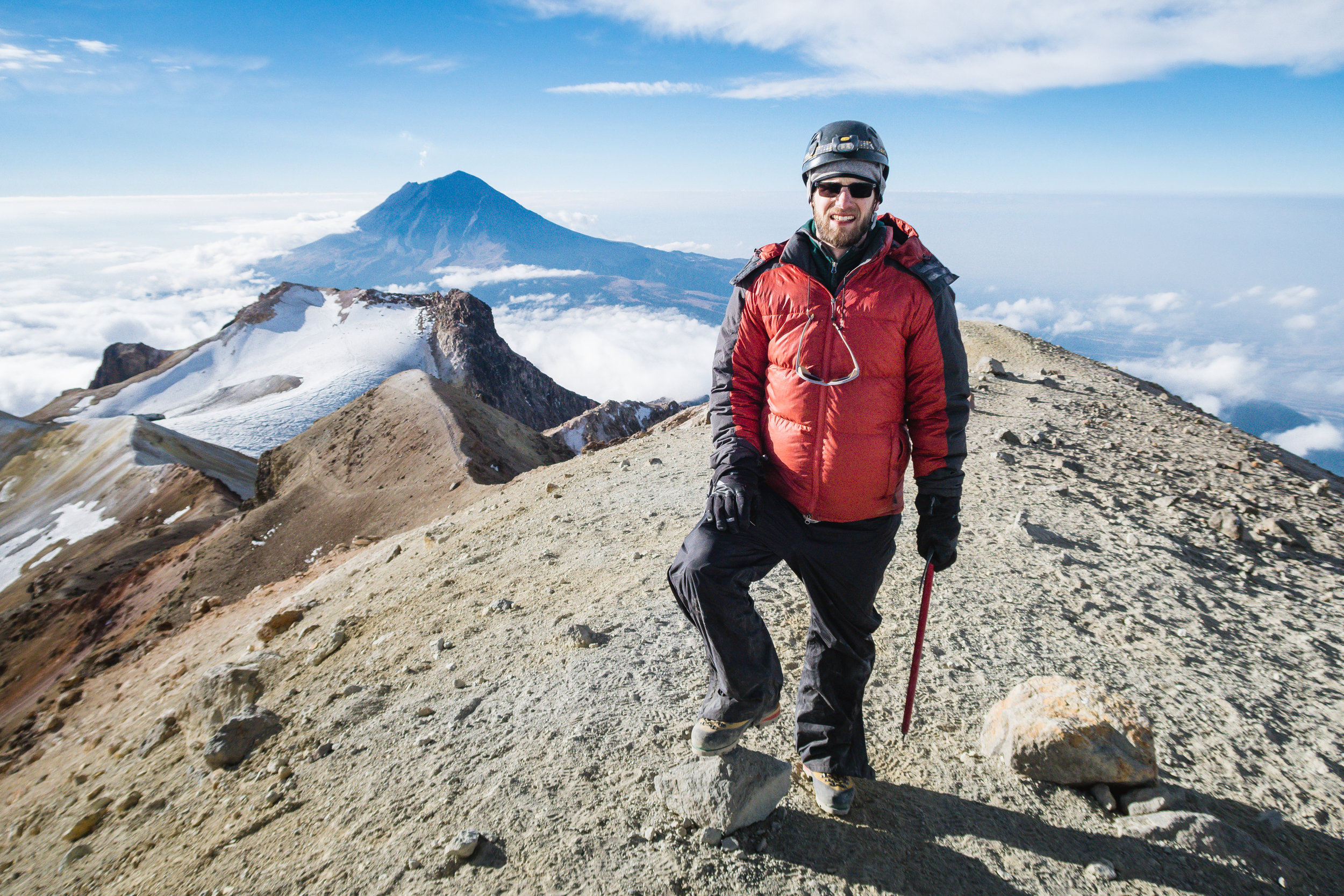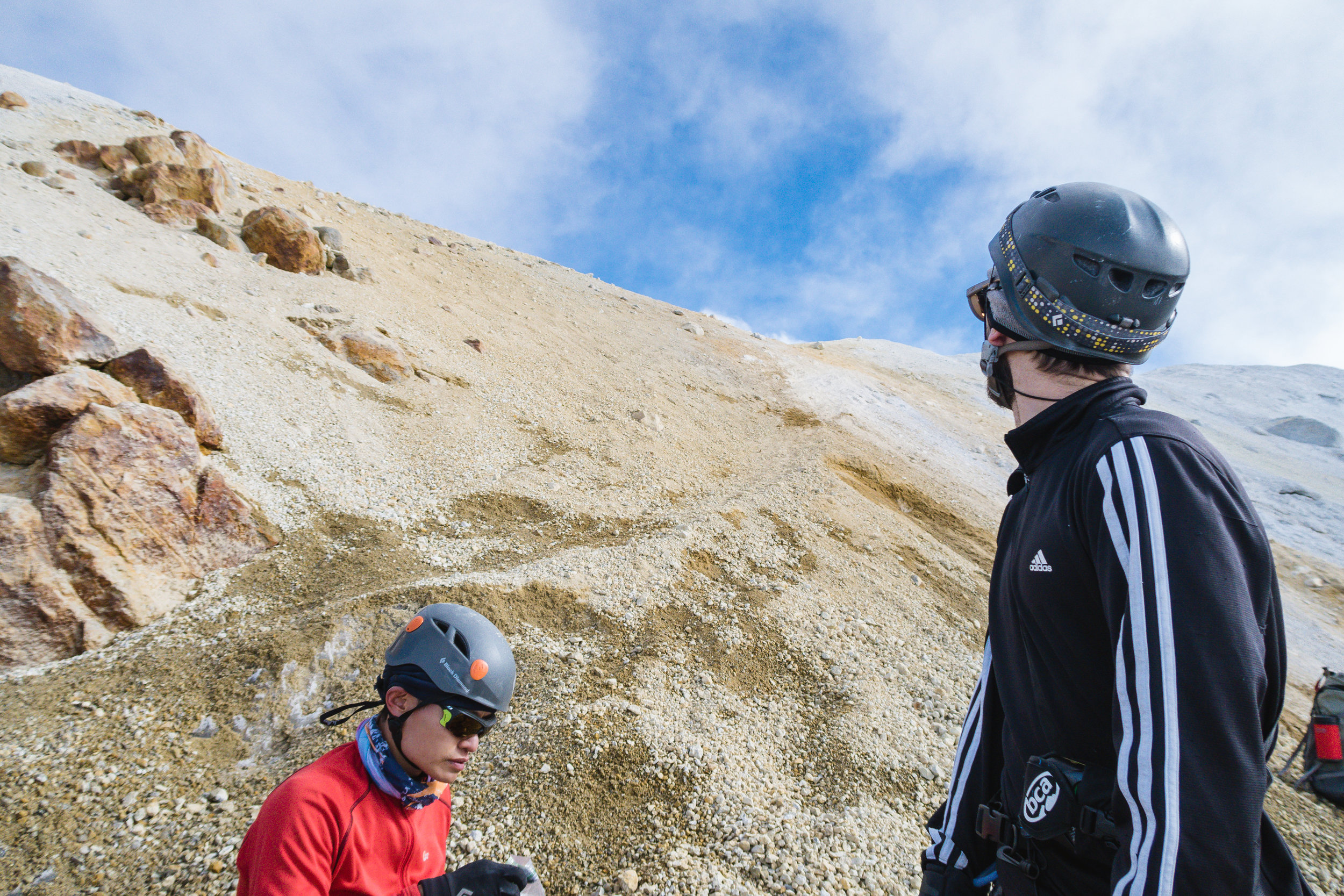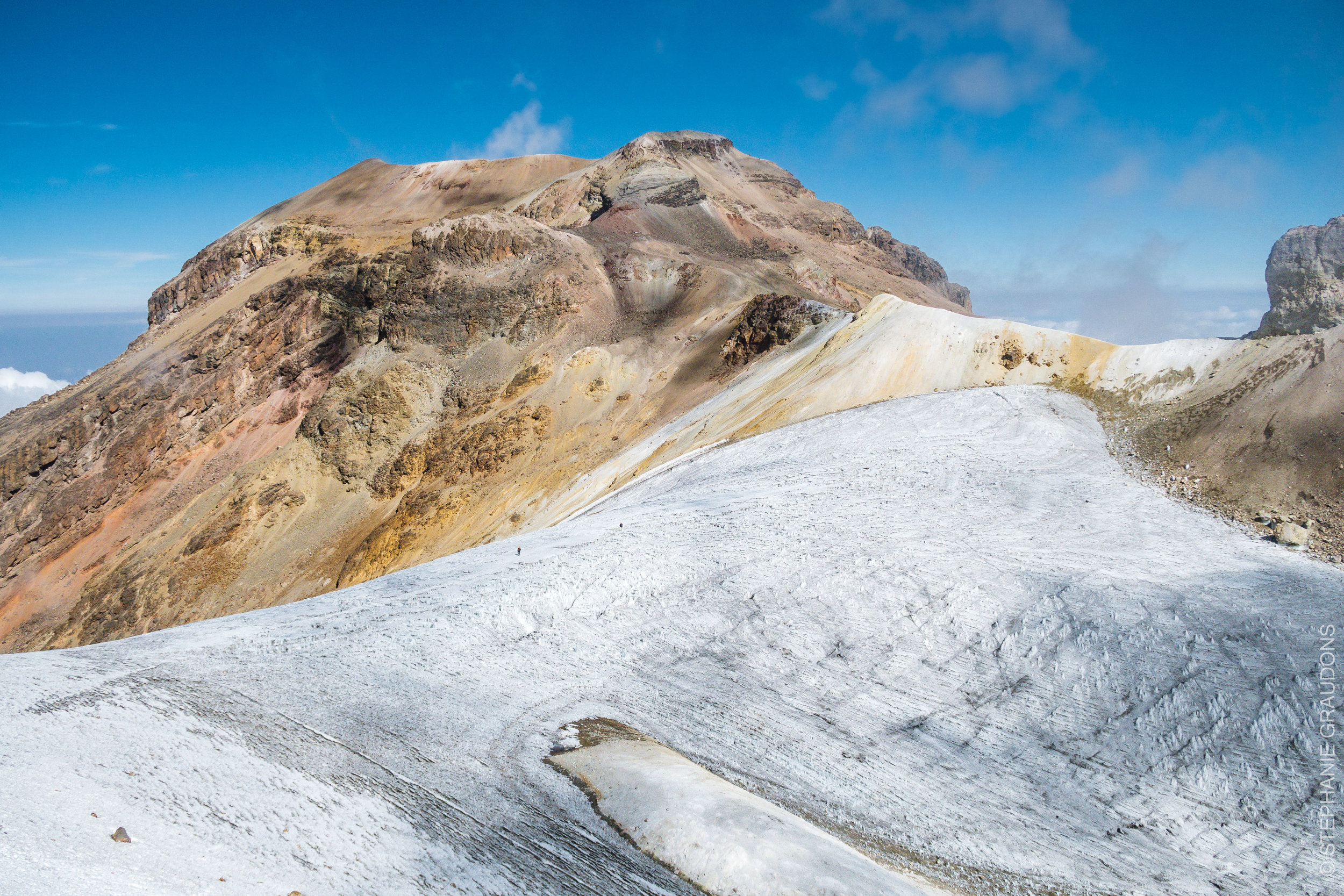WE SUMMITED IZTACCIHUATL!!!! :)
I think when we booked our trip to climb Mount Rainier, some part of us thought it would likely be the first and only mountaineering trip of its kind. We knew we wanted to push ourselves beyond our comfort zone and try something new, to take on a roped up, crevassed glacier adventure. With so many unknowns going into the trip, not knowing what to expect, I think we half expected to be terrified by the steep terrain and exposure, the deep crevasses with ladder crossings, and the elevated risks that come with such an endeavor. I remember trying not to look around too much in the dark on the way up, focusing on every step and breath, anxious about what the sunrise would reveal about my surroundings – but when the sun finally did come up, I was mesmerized and in complete awe of what I saw. The glacier was so beautiful and so grand, and I was so, so small. It was like being on another planet, and rather than feeling fear, I felt excited, amazed, and addicted. WE. MUST. DO. THIS. AGAIN.
So we booked another trip with RMI, this time to climb Orizaba and Iztaccihuatl, Mexico’s 1st and 3rd highest peaks, and spent the year in between training and learning Spanish. The inspiration for this trip came from the Banff Mountain Film Festival film, “55 Hours in Mexico,” which informed us of Orizaba’s existence, and depicted it as something we might be able to do. We read that the glacier was less crevassed and technical than Rainier, but with an altitude over 18k feet, we’d be climbing to new heights.
We flew into Mexico City from essentially sea level, and the next day, started our acclimatization on La Malinche. I knew this wasn’t going to be an easy trip right from the start, as I found myself getting tired, lightheaded, and even heaving at times before we reached 13k feet. We slept at 10k feet that night, and the next day drove to Izta-Popo Zoquiapan National Park. We walked the dirt road to the Altzomoni Hut at 13k feet and prepped for the climb ahead. The mountains were in the clouds when we arrived, and while setting up for the night, checking our tents, and packing for high camp, the clouds cleared and we could finally see both Iztaccihuatl and Popcatepetl. That evening, Popocatepetl even let off some steam for us, and it was amazing to watch the sunset while that massive volcano puffed out smoke.
Morning always comes way too soon on mountaineering trips, but we woke up to a hot scrambled egg breakfast that was easier to eat at altitude than the usual oatmeal. We didn’t have a lot of elevation gain to do to get to high camp, but with carrying estimated 50+ pound packs, we knew we wouldn’t be fast. Thankfully, our porters shuttled a few jugs of water to high camp so we could save ourselves a few pounds. The trail was a mix of gradual and steeper terrain, and higher up was steep, loose dirt and rocky.
We reached high camp at 15k feet around mid-afternoon, set up our tents, and then spent a little time relaxing in them. Dinner consisted of Ramen, which I’d never eaten before, and thankfully I tried Ted’s before putting the spice packet in mine. Way too salty, I ended up just eating the plain noodles. We reviewed the gear list for summit day, topped off water and packed up, took some acetazolamide and went to bed before sunset. I woke up around 8:30pm, insanely frustrated that I had to pee and had to get out of my sleeping bag, but immediately forgot I had to go upon stepping out of the tent and seeing the view. A sky of stars, a few distant clouds with lightning flashes, and surrounded by the bright lights of the huge cities way down below, it was incredible. After staring in awe for way too long, I remembered I’d stepped out here for a reason, and needed to get back to sleep. Our wake-up call was at 1am, which consisted of layering up, forcing as much oatmeal and hot chocolate down as possible without throwing it up, and being ready to hit the trail by 2am.
Izta is a very steep and rocky mountain, with everything from scrambling to steep, loose stuff, to sad glacier crossings. Apparently this year is very different than most years, as it’s been extremely dry and hasn’t snowed, so what is typically snow-covered was mostly just bare rock/dirt. This was not at all what I expected, as I do very well on the snow and glaciated terrain, and I’m not so fond of steep, loose rocks/dirt. There were only two relatively short sections where crampons were necessary, but otherwise it was bare ground the whole way. We roped up for a good portion of it, not so much because we really need to, but more for the comfort of knowing we wouldn’t go far if we did fall. From 2am til sunrise, we hiked, often in silence outside structured breaks, focusing hard on each step and pressure breath. If I got out of rhythm, it was obvious, as I’d immediately get the lightheaded and nauseous feeling, heaving here and there, feeling like I wasn’t getting enough oxygen (because I wasn’t). Then I’d push out a few good pressure breaths and work back into a rhythm.
Izta isn’t your typical climb to the top and go back down kind of deal. She is a ridge with many summits, which was immensely taxing, both physically and in terms of morale. But then, the sun comes up, and it's all worth it. We were treated to a gorgeous sunrise, complete with an undercast, and Popocatepetl continuing to puff out smoke pretty consistently. It was PERFECT.
After a good, long break in the sunshine, we started the descent. There seemed to be more breaks on the way down than on the way up, and it felt like it was taking forever going over all the bumps along the Ridge of the Sun. On Rainier, my emotional moment was upon seeing the sunrise and the top at the same time, knowing I was going to summit. This time, my emotional moment came when I finally crested a hill and could see high camp again, knowing I was going to make it out of there! As usual, Ted and I had our tent down and stuff packed in no time, and we hung out for quite a while waiting for everyone else to be packed up. My calf started to cramp a few times, so I used that time to stretch and hydrate. Our porters surprised us by meeting us at high camp and helping with not only taking down tents, but also by carrying the tents down for us. Ted was excited because everything finally fit in his 65L backpack (it was tight with half the tent in it on the way up). At this point, my feet were starting to hurt in my mountaineering boots, so my pace slowed a bit more, at least until there was lightning! Ted said when someone asked our local guide if lightning might be a problem, he said, “Only in July.” First there was graupel, then some snow, then bigger graupel, followed by a few loud clashes of thunder. I think that motivated everyone to not want to be 14k feet up anymore, so we didn’t take any breaks heading down from high camp. We were met at the trailhead by the local staff who provided sandwiches, beer, and sodas for us to enjoy while loading up the van. We now have a down day in the city to rest and explore Puebla, before heading to Tlachichuca and up to Orizaba high camp.
